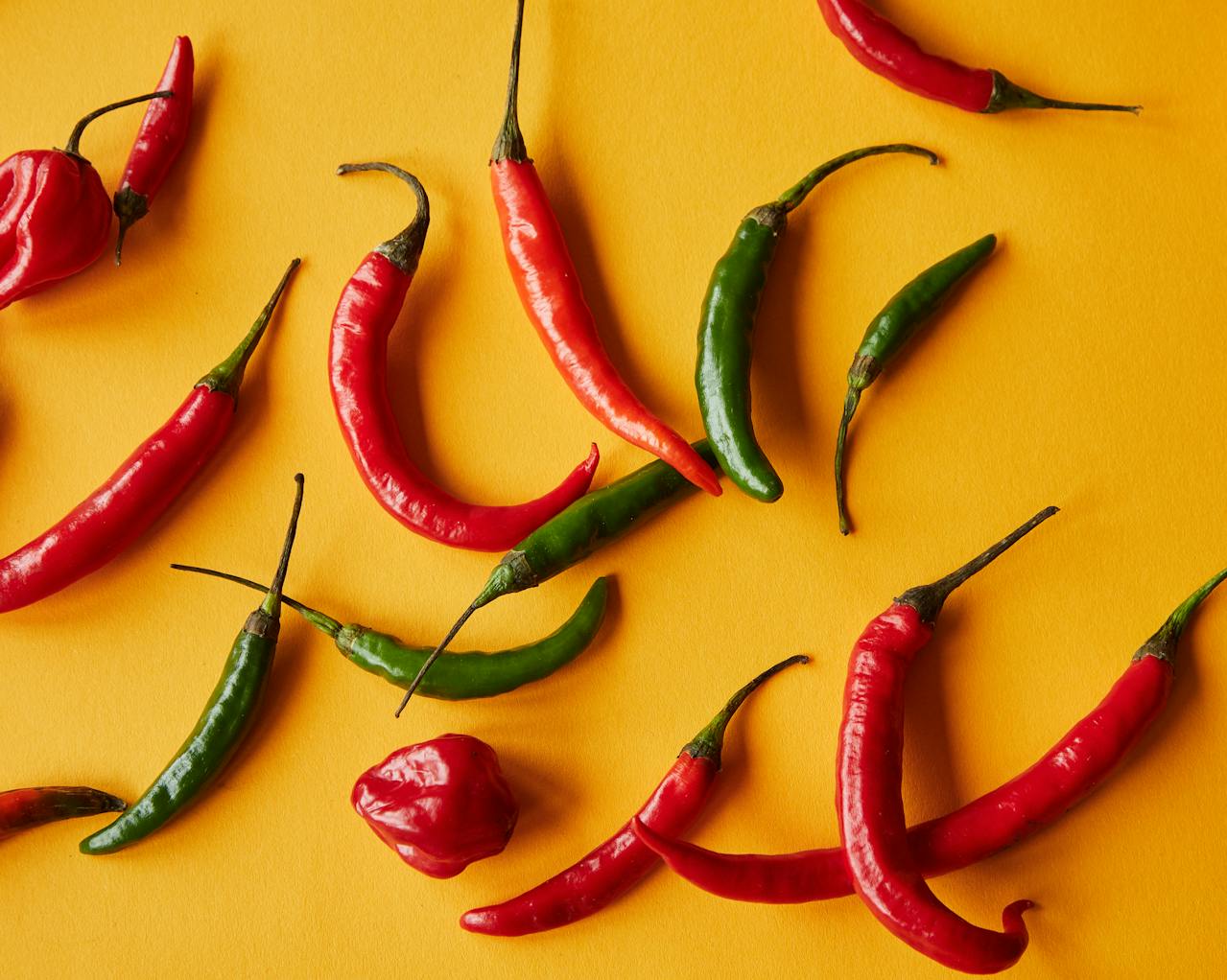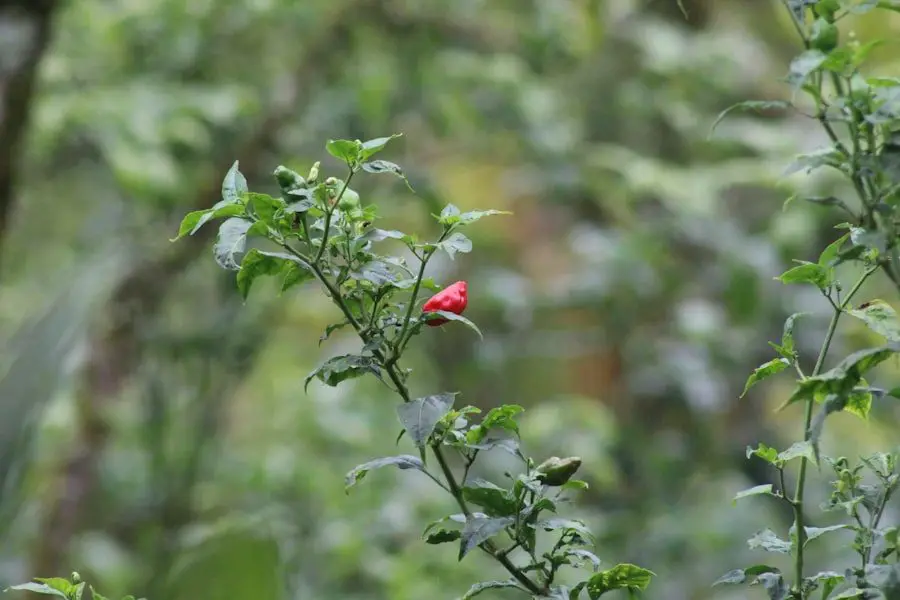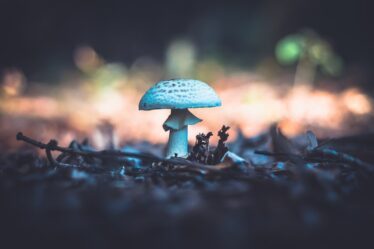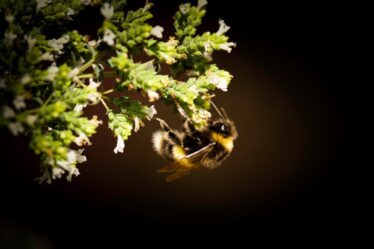
Bird chili pepper, also known as bird’s eye chili or Thai chili, is a small and fiery pepper that is widely used in cooking around the world. It is believed to have originated in South America and was later introduced to Southeast Asia by Portuguese traders. The bird chili pepper gets its name from the fact that birds are attracted to its bright red color and often eat the peppers, helping to spread the seeds.
In terms of physical characteristics, bird chili peppers are small and slender, measuring about 1-2 inches in length. They have a vibrant red or green color, depending on their level of ripeness. The peppers are known for their intense heat, which can range from 50,000 to 100,000 Scoville Heat Units (SHU). Despite their small size, bird chili peppers pack a punch and are often used sparingly in recipes.
Key Takeaways
- Bird chili pepper is a small, fiery pepper commonly used in Asian and Latin American cuisine.
- Using bird chili pepper in cooking can provide health benefits such as boosting metabolism and reducing inflammation.
- The Scoville scale measures the heat level of bird chili pepper, with some varieties reaching over 1 million Scoville units.
- To store and handle bird chili pepper, keep it in a cool, dry place and wear gloves when handling to avoid irritation.
- Different varieties of bird chili pepper have unique flavors, ranging from fruity to smoky, and can be used in a variety of cuisines.
Benefits of Using Bird Chili Pepper in Cooking
Bird chili peppers not only add a fiery kick to dishes but also offer several health benefits. They contain a compound called capsaicin, which has been shown to have anti-inflammatory and pain-relieving properties. Capsaicin is also known to boost metabolism and aid in weight loss. Additionally, bird chili peppers are rich in vitamins A and C, which are essential for maintaining a healthy immune system.
In terms of culinary benefits, bird chili peppers add a unique flavor profile to dishes. They have a fruity and slightly smoky taste that enhances the overall taste of a dish. The heat from the peppers can be adjusted by using more or less of them in a recipe, allowing for customization based on personal preference. Bird chili peppers are versatile and can be used in a variety of cuisines, ranging from Asian to Mexican.
Understanding the Scoville Scale of Bird Chili Pepper
The Scoville scale is a measurement of the heat or spiciness of chili peppers. It was developed by pharmacist Wilbur Scoville in 1912 and is still widely used today. The scale measures the concentration of capsaicin in a pepper, with higher concentrations resulting in a higher Scoville rating.
Bird chili peppers typically rank between 50,000 to 100,000 SHU on the Scoville scale. This places them in the medium to hot range of spiciness. To put it into perspective, a jalapeno pepper ranks between 2,500 to 8,000 SHU, making bird chili peppers significantly hotter.
How to Store and Handle Bird Chili Pepper
| Storage Method | Temperature | Shelf Life |
|---|---|---|
| Room Temperature | 70-75°F | 1-2 weeks |
| Refrigerator | 35-40°F | 3-4 weeks |
| Freezer | 0°F | 6-8 months |
| Handling Tips | Wear gloves when handling bird chili pepper to avoid skin irritation. Wash hands thoroughly after handling. | |
To ensure the longevity and freshness of bird chili peppers, proper storage techniques should be followed. The peppers can be stored in the refrigerator for up to two weeks or frozen for several months. If freezing, it is recommended to remove the stems and seeds before placing them in an airtight container or freezer bag.
When handling bird chili peppers, it is important to take safety precautions. The capsaicin in the peppers can cause skin and eye irritation, so it is advisable to wear gloves when handling them. If gloves are not available, thoroughly wash hands with soap and water after handling the peppers. Avoid touching your face or eyes while handling bird chili peppers to prevent any discomfort or irritation.
Bird Chili Pepper Varieties and Their Flavors
There are several varieties of bird chili peppers, each with its own unique flavor profile. Some popular varieties include Thai bird chili, African bird’s eye chili, and Indian bird’s eye chili.
Thai bird chili is one of the most common varieties and is widely used in Thai cuisine. It has a bright red color and a fruity flavor with a hint of citrus. African bird’s eye chili, also known as piri piri or peri-peri pepper, has a slightly smoky taste and is often used in African and Portuguese dishes. Indian bird’s eye chili, also known as bhut jolokia or ghost pepper, is one of the hottest chili peppers in the world. It has a fruity and floral flavor with an intense heat that lingers.
Using Bird Chili Pepper in Different Cuisines

Bird chili peppers are used in a variety of cuisines around the world, adding heat and flavor to dishes. In Thai cuisine, they are a staple ingredient in dishes such as Tom Yum soup and Pad Thai. In Mexican cuisine, bird chili peppers are used in salsas, enchiladas, and tacos to add a spicy kick. In Indian cuisine, they are used in curries and chutneys to add heat and depth of flavor.
Preparing Bird Chili Pepper for Cooking
Before using bird chili peppers in cooking, it is important to prepare them properly. Start by washing the peppers under cold water to remove any dirt or debris. Next, remove the stems by cutting them off with a sharp knife. If you prefer less heat, you can also remove the seeds and membrane by cutting the pepper in half lengthwise and scraping them out with a spoon.
Recipes to Try with Bird Chili Pepper
1. Spicy Thai Basil Chicken:
– Ingredients: 1 lb chicken breast, sliced; 2 tbsp vegetable oil; 4 cloves garlic, minced; 2 bird chili peppers, sliced; 1 cup Thai basil leaves; 2 tbsp soy sauce; 1 tbsp fish sauce; 1 tbsp oyster sauce; 1 tsp sugar
– Instructions: Heat oil in a wok or skillet over medium-high heat. Add garlic and bird chili peppers and stir-fry for 1 minute. Add chicken and cook until browned and cooked through. Stir in soy sauce, fish sauce, oyster sauce, and sugar. Add Thai basil leaves and cook for an additional minute. Serve with steamed rice.
2. Spicy Mexican Salsa:
– Ingredients: 4 tomatoes, diced; 1 onion, finely chopped; 2 bird chili peppers, minced; 1 clove garlic, minced; 1/4 cup cilantro, chopped; juice of 1 lime; salt to taste
– Instructions: In a bowl, combine tomatoes, onion, bird chili peppers, garlic, cilantro, lime juice, and salt. Mix well and let sit for at least 30 minutes to allow the flavors to meld together. Serve with tortilla chips or as a topping for tacos and burritos.
Pairing Bird Chili Pepper with Other Spices and Herbs
To balance the heat of bird chili peppers and enhance their flavor, they can be paired with complementary spices and herbs. Some popular pairings include garlic, ginger, lemongrass, cilantro, and lime. These ingredients help to mellow out the spiciness of the peppers while adding depth and complexity to dishes.
Safety Tips When Working with Bird Chili Pepper
When working with bird chili peppers, it is important to take additional safety precautions to avoid any discomfort or irritation. If you accidentally touch your face or eyes after handling the peppers, it is recommended to rinse with cold water immediately. Avoid rubbing your eyes as this can spread the capsaicin and worsen the irritation. If skin irritation occurs, apply a soothing lotion or aloe vera gel to alleviate any discomfort.
In conclusion, bird chili pepper is a versatile ingredient that adds heat and flavor to a variety of dishes. It offers several health benefits and can be used in cuisines from around the world. By understanding how to handle and prepare bird chili peppers properly, you can enjoy their fiery kick without any discomfort or irritation. So go ahead and spice up your next meal with some bird chili pepper!
If you’re a fan of the fiery heat of bird chili peppers, you might also be interested in learning about the hobbyist’s guide to cultivating muscadine grapes. These juicy and flavorful grapes are not only delicious on their own but can also be used to make jams, jellies, and even wine. Check out this informative article on Flavorful Sips: https://flavorfulsips.com/muscadine-grapes-hobbyists-guide-to-cultivation/.



